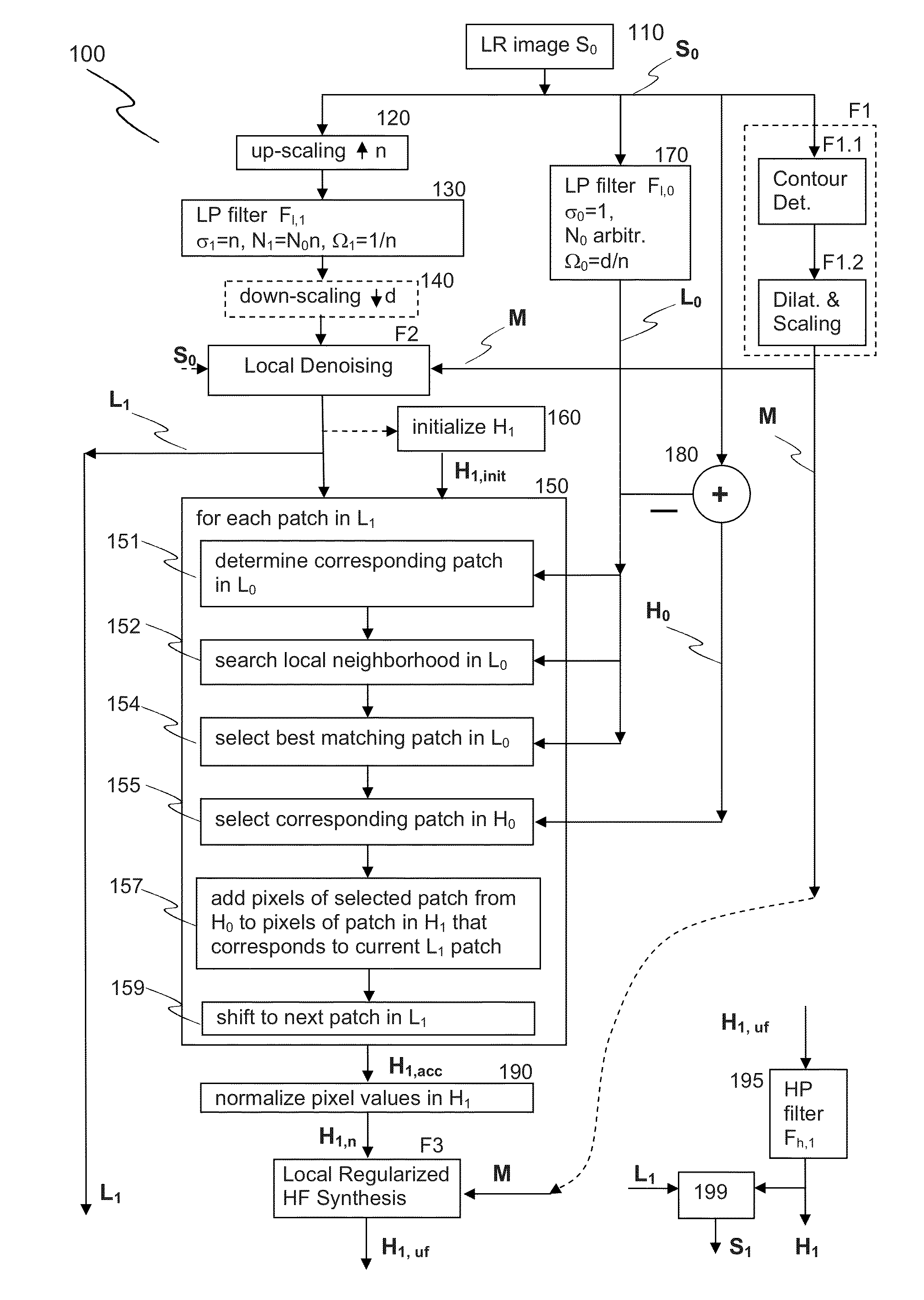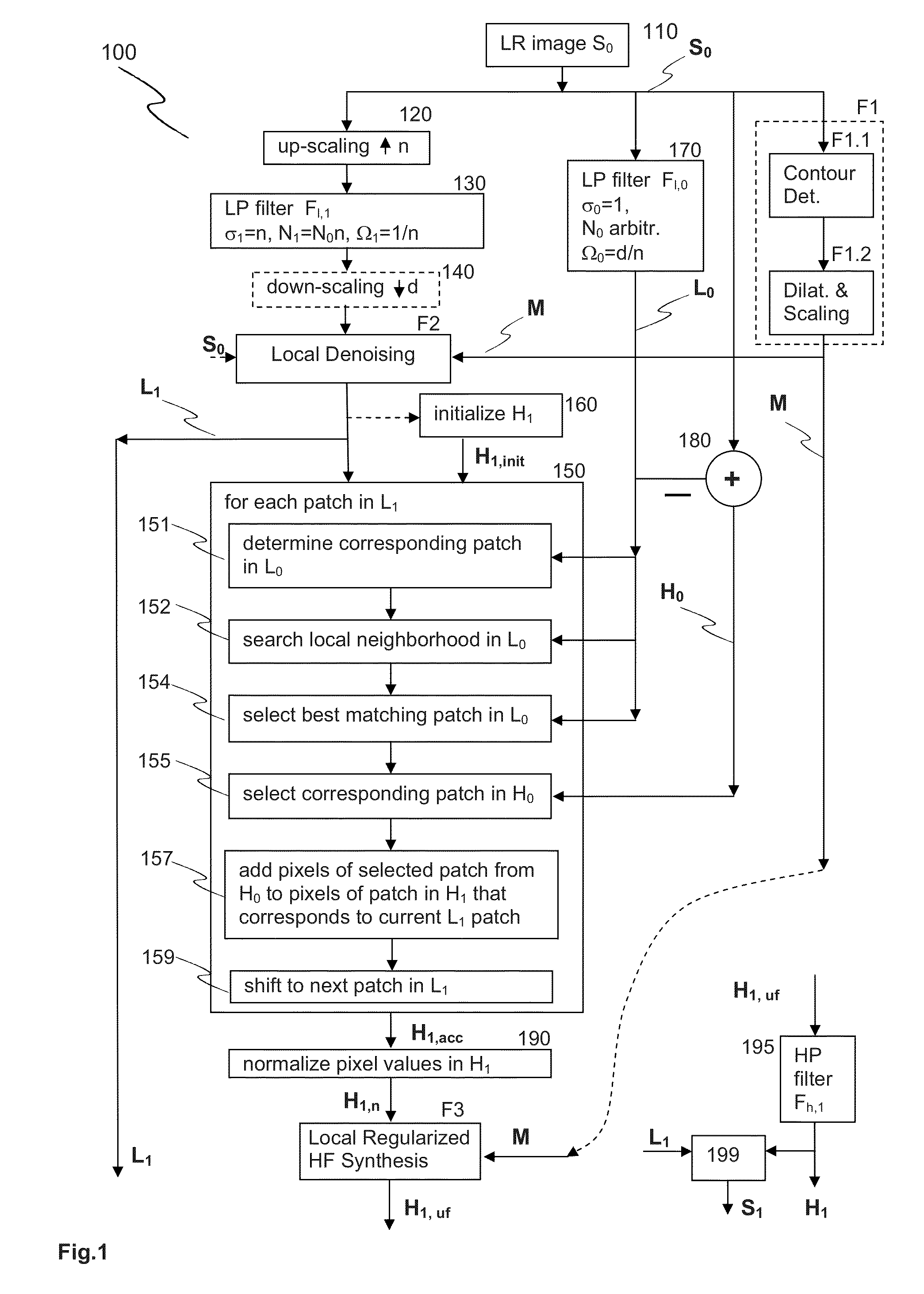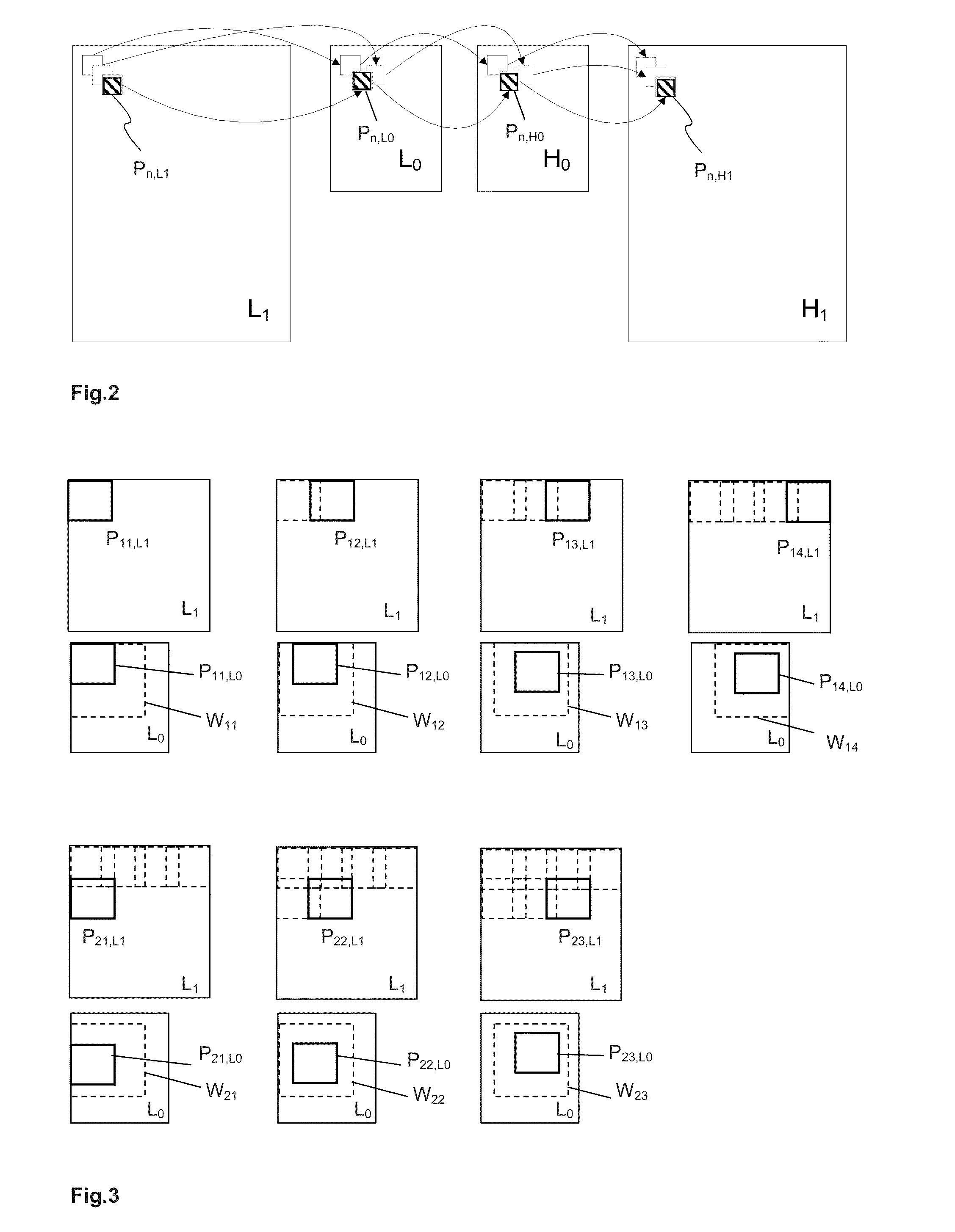Method and device for generating a super-resolution version of a low resolution input data structure
a low-resolution input and data structure technology, applied in the direction of geometric image transformation, image enhancement, instruments, etc., can solve the problems of poor algorithm performance, the solution of estimation is unable to robustly register consecutive frames in video-sequences with sufficient accuracy, and the limiting factor of these techniques is in the estimation of the point spread function (psf). , to achieve the effect of less noise, noise in the image, and less nois
- Summary
- Abstract
- Description
- Claims
- Application Information
AI Technical Summary
Benefits of technology
Problems solved by technology
Method used
Image
Examples
Embodiment Construction
[0038]FIG. 1 shows, in an embodiment of the present invention, a flow-chart of a method for performing super-resolution processing of a low resolution input data structure S0 of digital 1D, 2D or 3D data. In this embodiment, the method comprises steps of
generating a de-noising mask M, comprising a contour detection step F1.1 and a dilation and scaling step F1.2,
filtering 170 the input data structure S0 by a first low-pass filter FI,0, wherein a LF input data structure L0 is obtained,
calculating in an adder / subtractor 180 a difference between the input data structure S0 and the LF input data structure L0, whereby a HF input data structure H0 is generated,
upscaling 120 the input data structure S0, and filtering 130 the upscaled input data structure by a second low-pass filter FI,1, wherein a LF upscaled data structure is obtained,
locally de-noising F2 the LF upscaled data structure in regions that are indicated by the de-noising mask M, wherein a locally de-noised LF upscaled data str...
PUM
 Login to View More
Login to View More Abstract
Description
Claims
Application Information
 Login to View More
Login to View More - R&D
- Intellectual Property
- Life Sciences
- Materials
- Tech Scout
- Unparalleled Data Quality
- Higher Quality Content
- 60% Fewer Hallucinations
Browse by: Latest US Patents, China's latest patents, Technical Efficacy Thesaurus, Application Domain, Technology Topic, Popular Technical Reports.
© 2025 PatSnap. All rights reserved.Legal|Privacy policy|Modern Slavery Act Transparency Statement|Sitemap|About US| Contact US: help@patsnap.com



